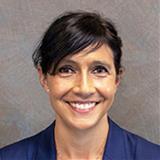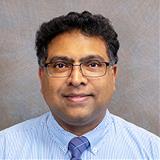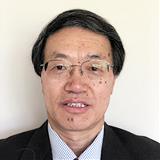 Sabrina Sartori
Sabrina Sartori
University of Oslo
Sabrina Sartori is associate professor and head of solid-state synthesis laboratory at the Department of Technology Systems at the University of Oslo. Her research interests include materials for energy storage and conversion, and their characterization via in-situ and operando synchrotron and neutron radiation experiments. She earned her MSc degree in chemistry from the University of Padova and her PhD degree in materials science and engineering from the University of Bologna. She has held research positions at the University of Padova and the Institute for Energy Technology in Norway, before joining the University of Oslo in 2013. From 2015-2017, Sartori was one of the Directors of MRS and currently serves as an expert and leader in several national and international committees, boards and initiatives.
 Prasad Shastri
Prasad Shastri
University of Freiburg
Prasad Shastri is a professor at the University of Freiburg, Germany, where he holds the Hermann Staudinger Chair for Biofunctional Macromolecular Chemistry and the BIOSS Professorship of Cell Signalling Environments. He is also the Director of the Institute for Macromolecular Chemistry and one of the core faculty at the BIOSS Center for Biological Signaling Studies, which is one of the national clusters of Excellence in Germany. He received his PhD degree from Rensselaer Polytechnic Institute in 1995 and carried out his post-doctoral work with Robert Langer at MIT. He has published over 120 peer-reviewed papers, and authored several proceedings articles, extended abstracts and book chapters. Shastri has also authored over 50 issued and pending patents in materials science, regenerative medicine and tumor biology. In addition to pioneering several technologies in biomaterials, drug delivery, and nanotechnology, including the In Vivo Bioreactor, a groundbreaking approach for autologous engineering of bone and cartilage, his laboratory is active in the development of biomaterials for controlling cellular microenvironments, in vivo engineering of tissue, intracellular delivery, cancer therapeutics, cancer biology and functional imaging.
 Chongmin Wang
Chongmin Wang
Pacific Northwest National Laboratory
Chongmin Wang is a chief scientist at Pacific Northwest National Laboratory and his research interests include the state of the art S/TEM imaging and spectroscopy and their application to materials characterization, especially in situ and operando S/TEM techniques for energy materials. He received his BSc and MSc degrees in physics from Lanzhou University, China and PhD degree in Materials Science and Engineering from University of Leeds, UK. He worked at Max-Planck Institute for Metal Research in Stuttgart in Germany as an Alexander von Humboldt Research Fellow, National Institute for Materials Science in Japan, and Lehigh University, focusing on atomic level study of grain boundary structure and chemistry using S/TEM. Wang is one of the pioneers on in-situ TEM technique for rechargeable battery research, which has earned him prestigious honors, including the 2016 MRS Innovation in Materials Characterization Award; 2017 PNNL Laboratory Director’s Award for Exceptional Scientific Achievement; 2016 Journal of Materials Research (JMR) Paper of the Year Award; 2012 Microscopy Today Innovation Award. He is also the recipient of R&D100 Award, Rowland Snow Award from the American Ceramic Society, Outstanding Invention Award from Japanese Science and Education Committee, PNNL Exceptional Contribution Awards. He has published 370 journal papers and several book chapters, and delivered 70 invited talks. He is serving as the principal editor of the Journal of Materials Research and is a Fellow of Materials Research Society.